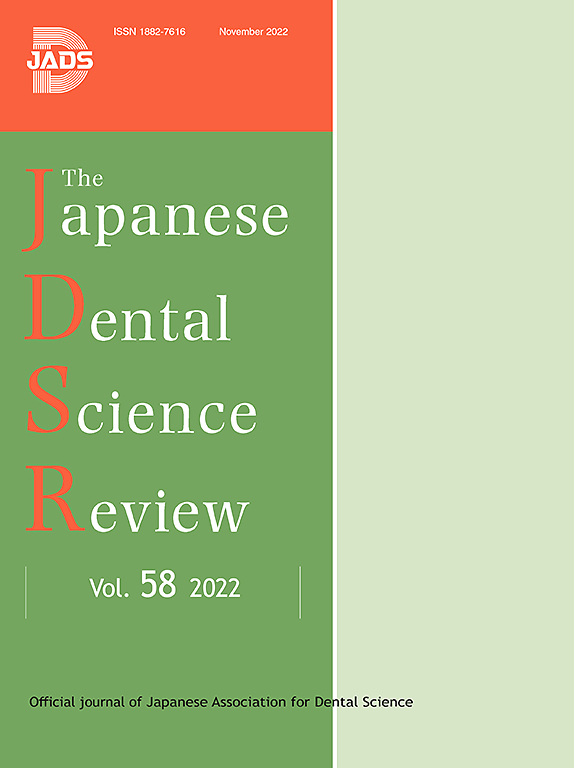辅助牙周干预在非手术牙周治疗III/IV期C级牙周炎中的疗效:一项系统综述和网络荟萃分析
IF 5.7
2区 医学
Q1 DENTISTRY, ORAL SURGERY & MEDICINE
引用次数: 0
摘要
本研究评估了辅助疗法结合非手术牙周治疗治疗III/IV期C级牙周炎的有效性,重点关注袋深度(PD)减少、临床附着水平(CAL)增加和不良事件。进行了系统评价和网络荟萃分析,包括截至2024年9月的随机对照试验。发现不一致和发表偏倚,提示辅助治疗的敏感性分析和有效性排名。纳入了50项研究的数据,其中45项进入网络荟萃分析,涵盖24项干预措施和1431名患者。与单纯的刮治和刨根(SRP)相比,辅助全身lincoamide与硝基咪唑(Mac/Linc+硝基- s)显示出最大的PD降低,其次是局部他汀类药物(他汀- l)在短期内(≤3个月)。他汀类药物l也提供了最高的CAL增益。在中期(4-6个月),他汀- l仍然是最有效的,其次是双膦酸盐。在长期(6个月)随访中,可用的治疗方法较少,硝基- s达到最显著的PD降低和CAL增加,其次是Mac/林肯- s。不良反应轻微且具有自限性。尽管有很好的发现,但CAL结果的不一致性和潜在的发表偏倚突出了进一步研究以确认长期安全性和有效性的必要性。本文章由计算机程序翻译,如有差异,请以英文原文为准。
Efficacy of adjunctive periodontal interventions in non-surgical periodontal therapy for Stage III/IV Grade C periodontitis: A systematic review and network meta-analysis
This study evaluates the effectiveness of adjunctive therapies combined with non-surgical periodontal treatment for Stage III/IV Grade C periodontitis, focusing on pocket depth (PD) reduction, clinical attachment level (CAL) gain, and adverse events. A systematic review and network meta-analysis were conducted, including randomized controlled trials up to September 2024. Inconsistencies and publication bias were detected, prompting sensitivity analyses and effectiveness rankings of adjunctive therapies. Data from 50 studies were included, with 45 entered into network meta-analysis, covering 24 interventions and 1431 patients. Compared to scaling and root planing (SRP) alone, adjunctive systemic lincosamides with nitroimidazole (Mac/Linc+Nitro-S) demonstrated the greatest PD reduction, followed by local statins (Statins-L) in the short term (≤3 months). Statins-L also provided the highest CAL gain. In the medium term (4–6 months), Statins-L remained the most effective, followed by bisphosphonates. For long-term (>6 months) follow-up, where fewer treatment approaches were available, Nitro-S achieved the most significant PD reduction and CAL gain, followed by Mac/Linc-S. Adverse effects were mild and self-limiting. Despite promising findings, inconsistencies in CAL outcomes and potential publication bias highlight the need for further research to confirm long-term safety and efficacy.
求助全文
通过发布文献求助,成功后即可免费获取论文全文。
去求助
来源期刊

Japanese Dental Science Review
DENTISTRY, ORAL SURGERY & MEDICINE-
CiteScore
9.90
自引率
1.50%
发文量
31
审稿时长
32 days
期刊介绍:
The Japanese Dental Science Review is published by the Japanese Association for Dental Science aiming to introduce the modern aspects of the dental basic and clinical sciences in Japan, and to share and discuss the update information with foreign researchers and dentists for further development of dentistry. In principle, papers are written and submitted on the invitation of one of the Editors, although the Editors would be glad to receive suggestions. Proposals for review articles should be sent by the authors to one of the Editors by e-mail. All submitted papers are subject to the peer- refereeing process.
 求助内容:
求助内容: 应助结果提醒方式:
应助结果提醒方式:


